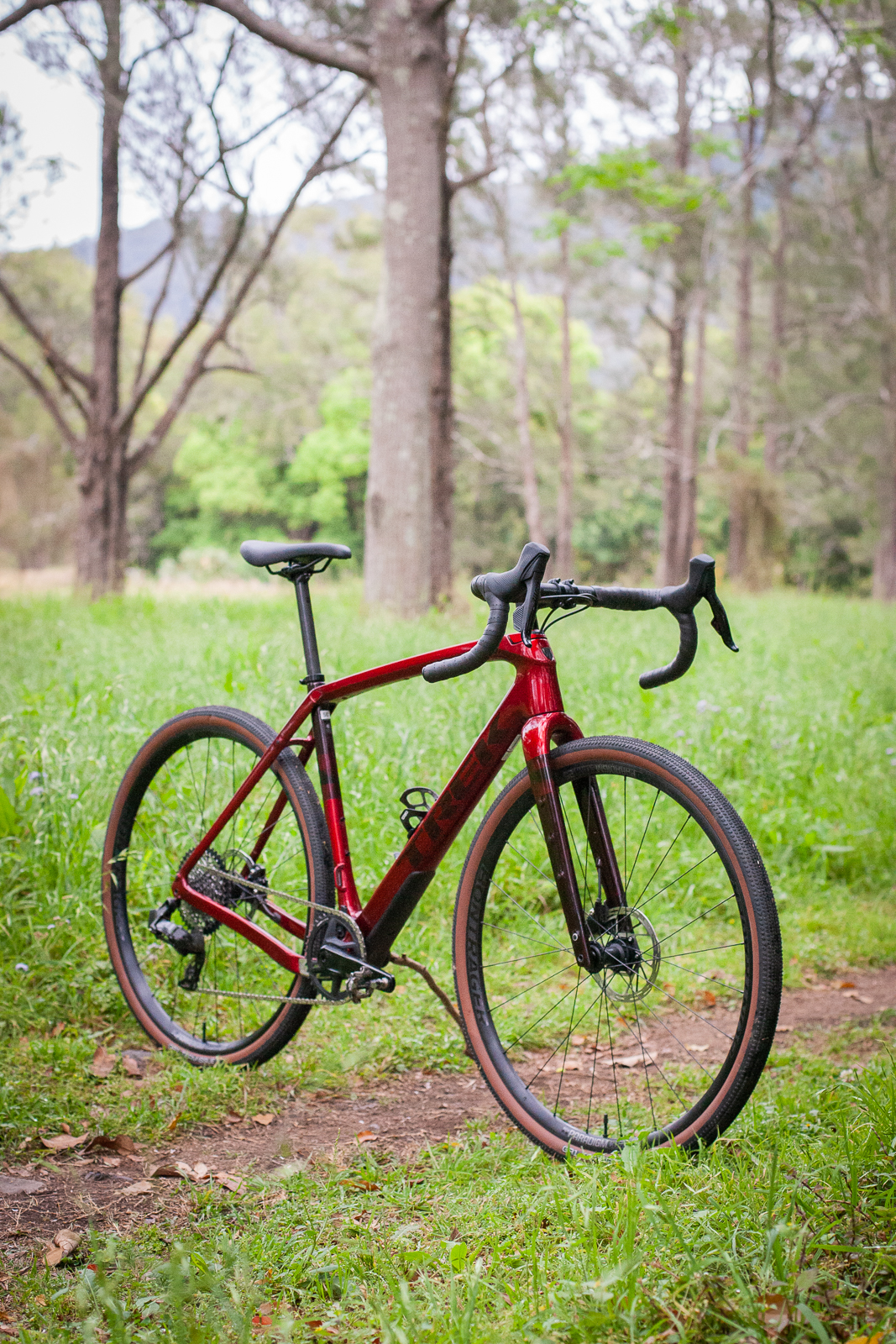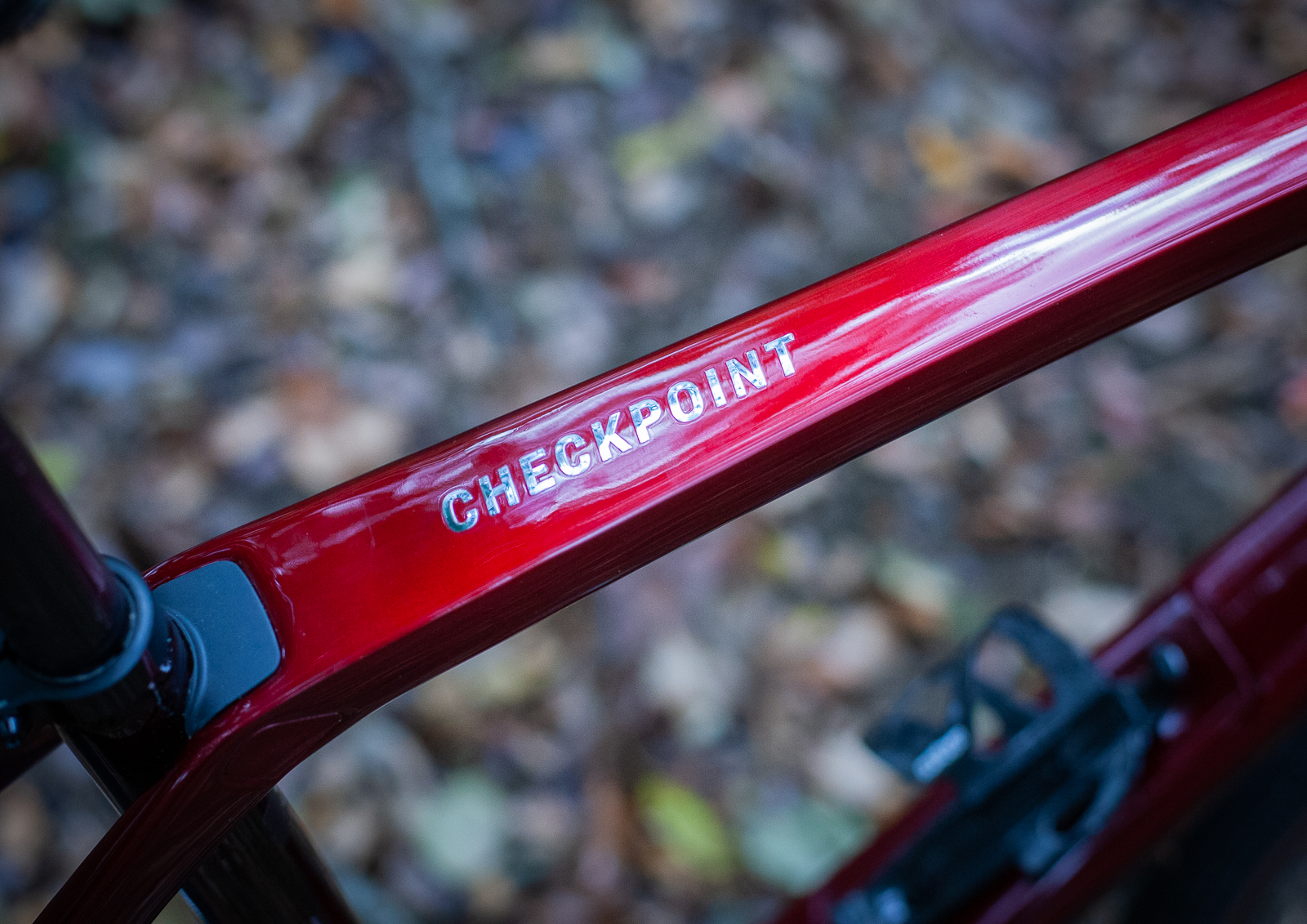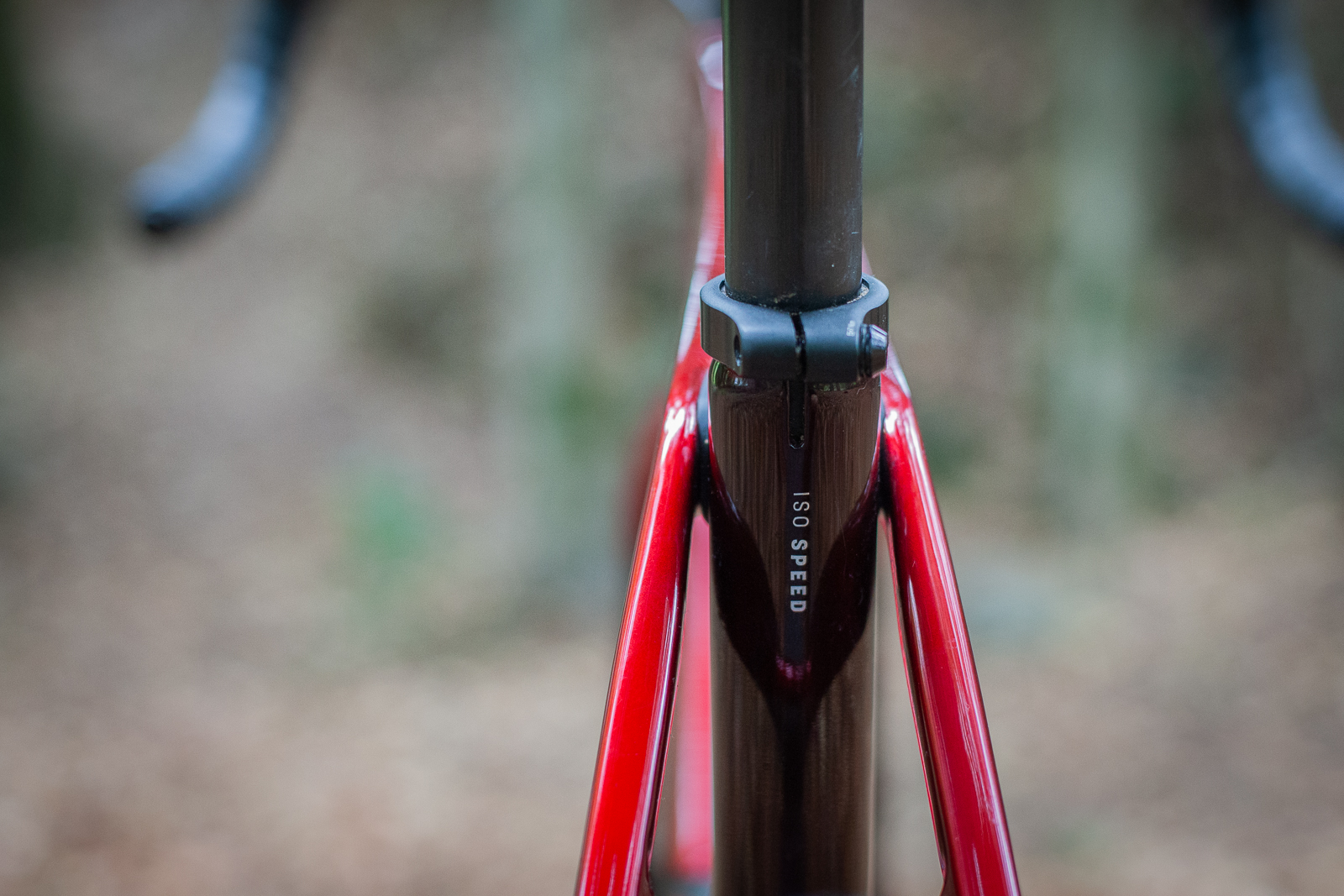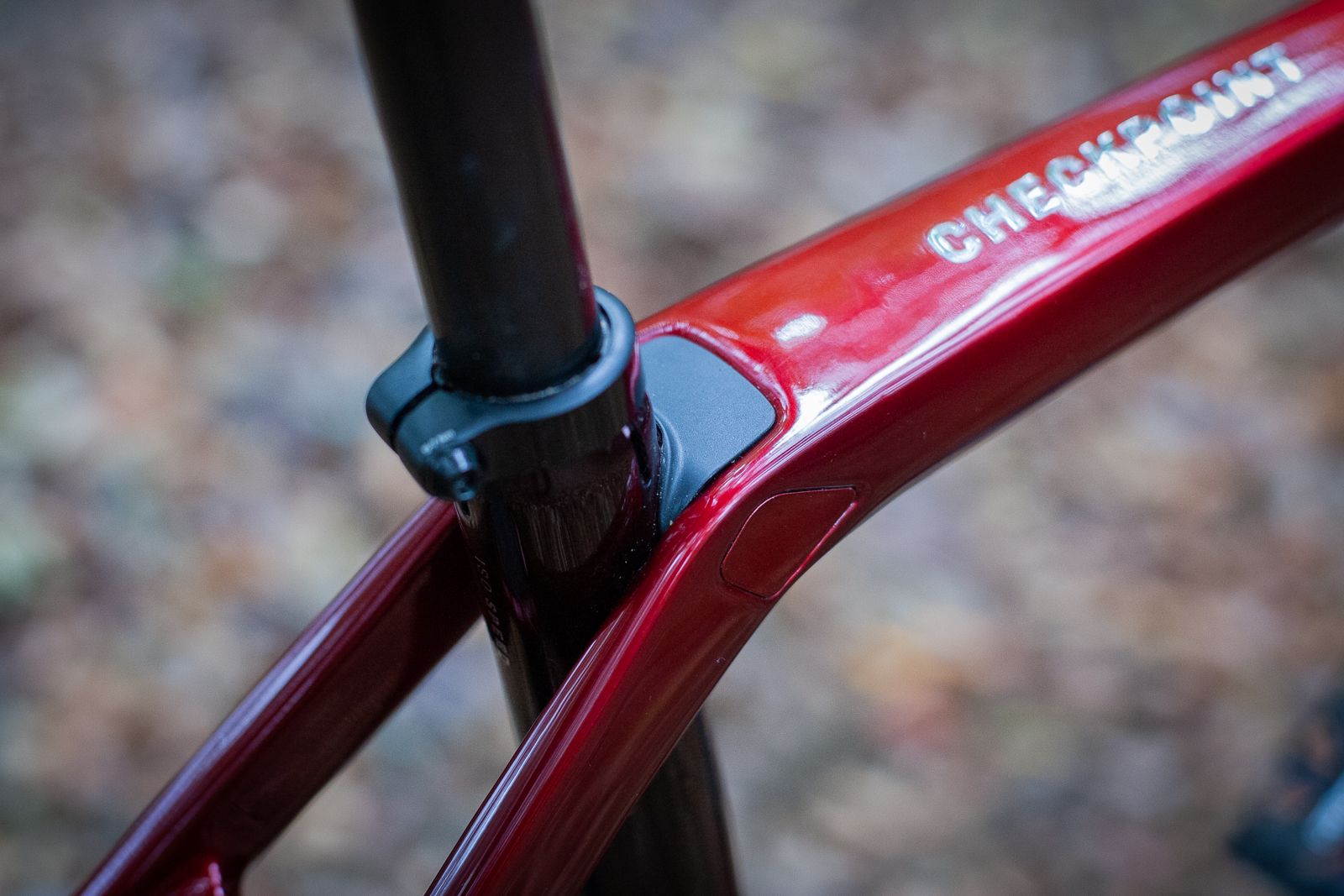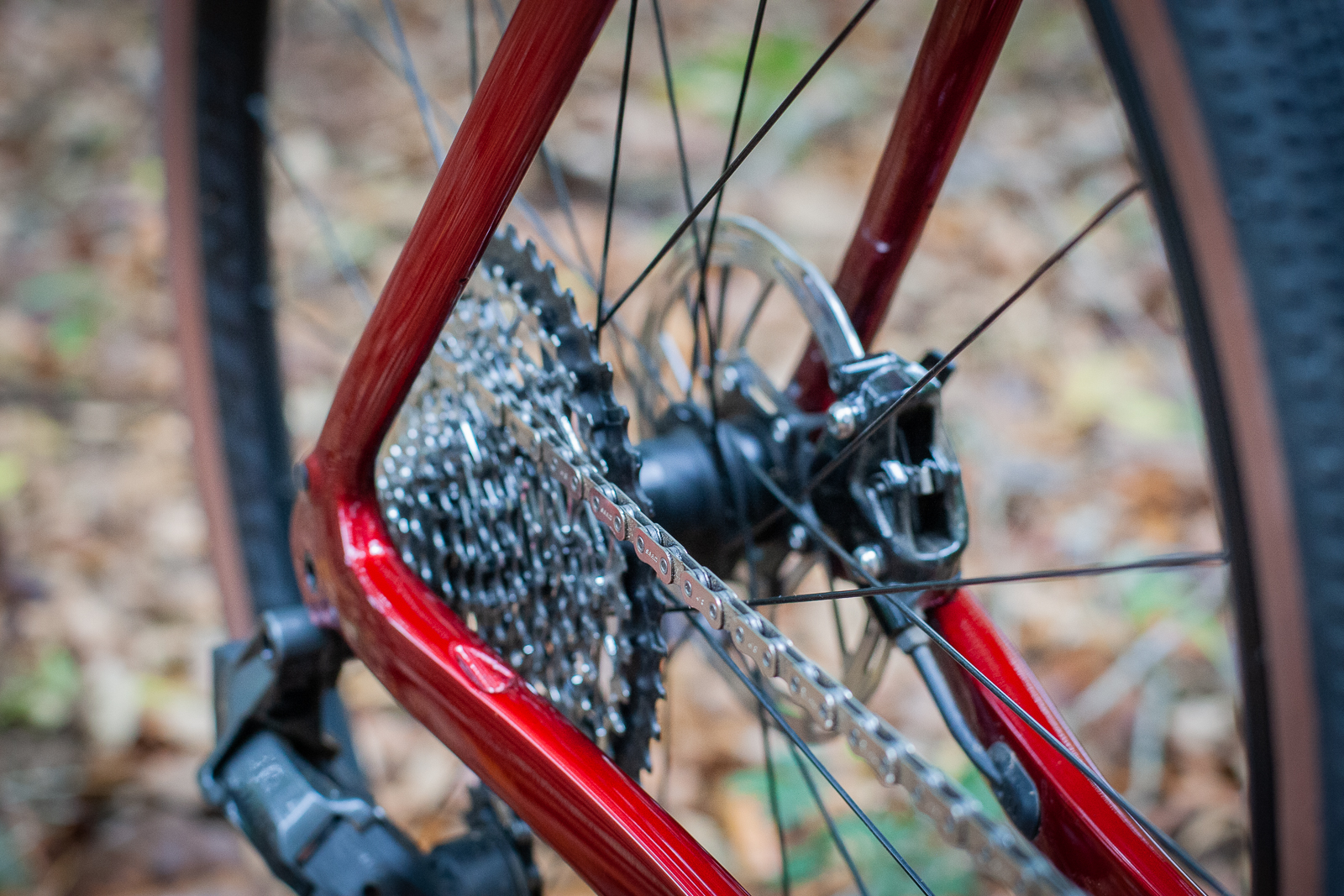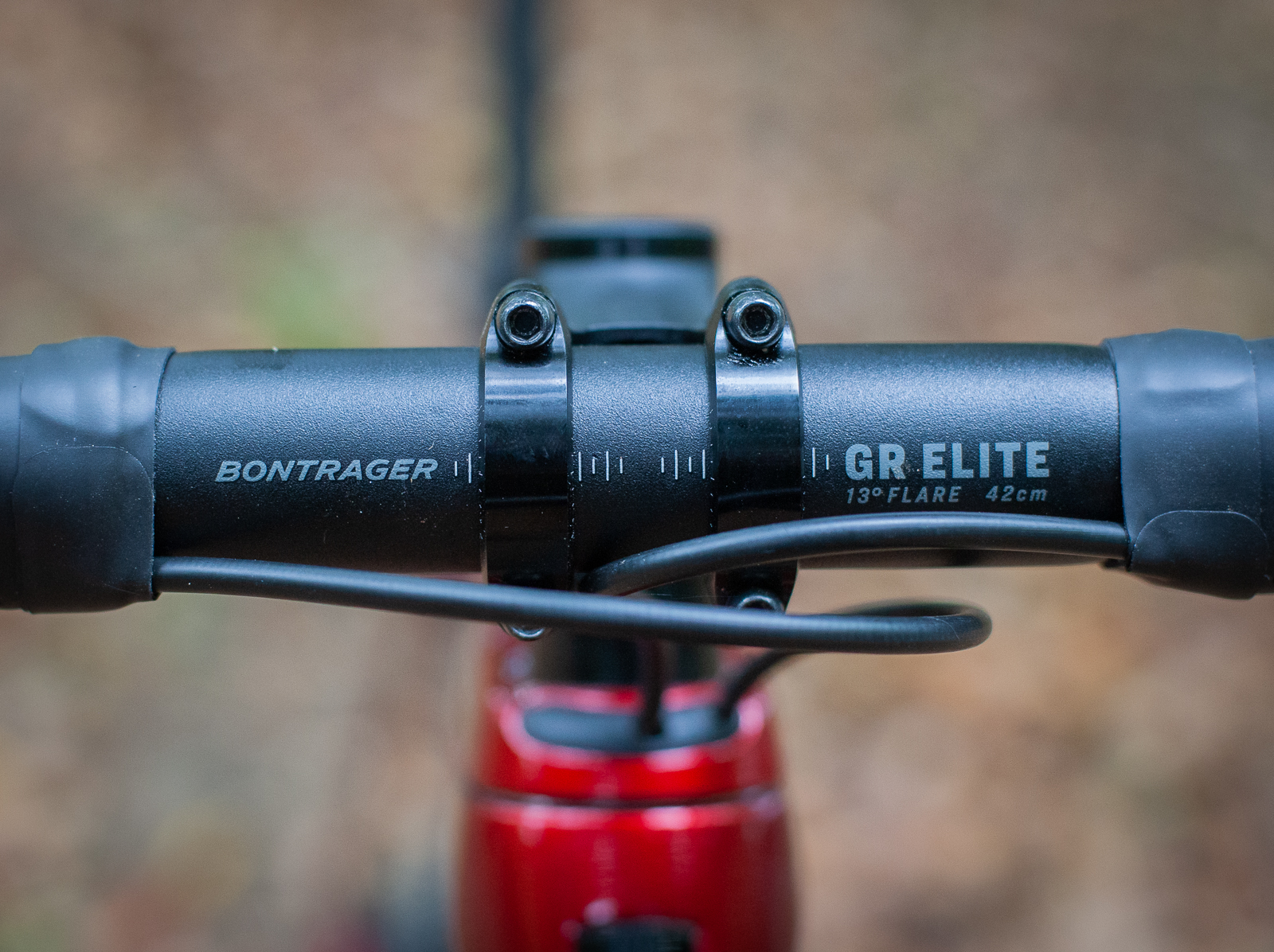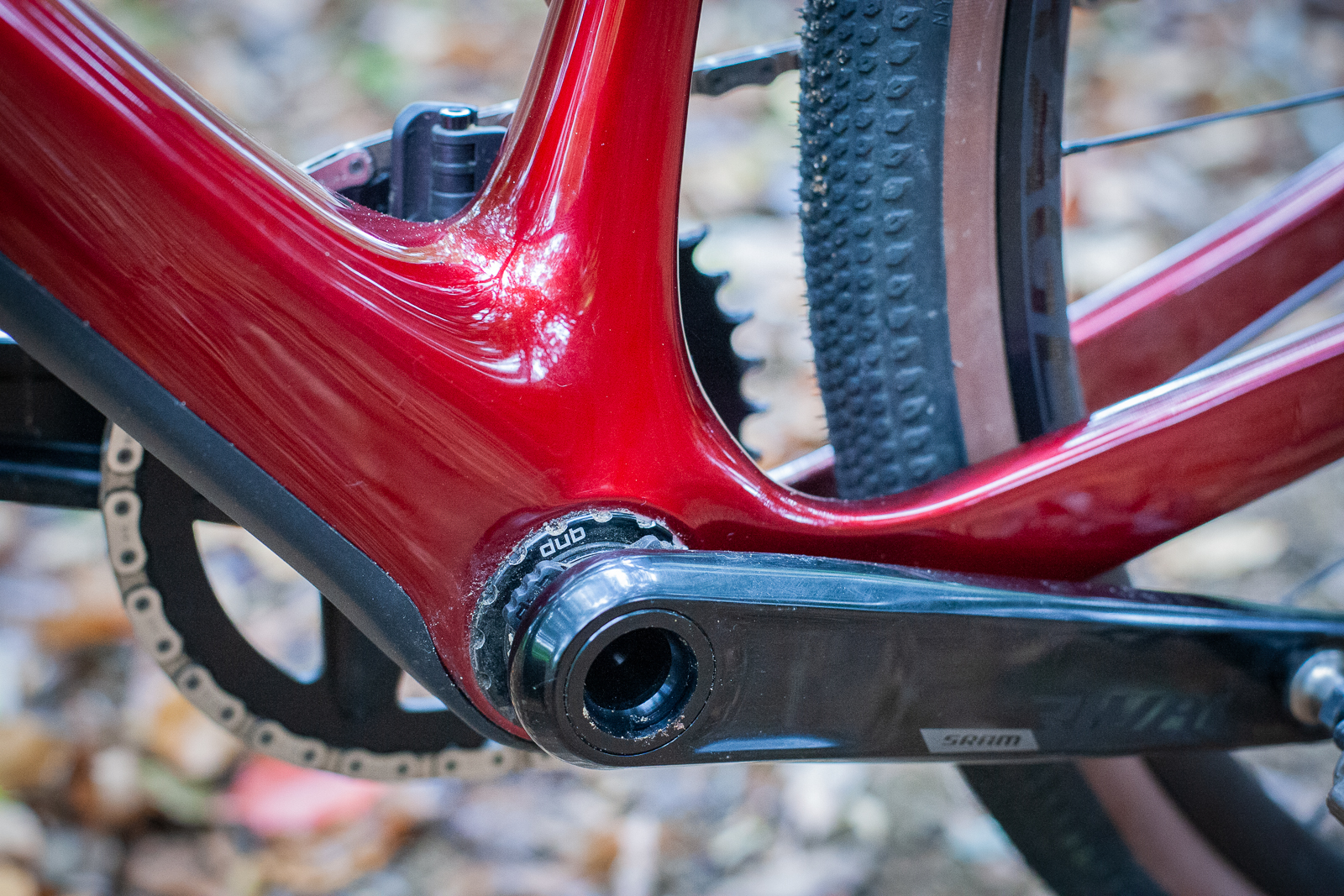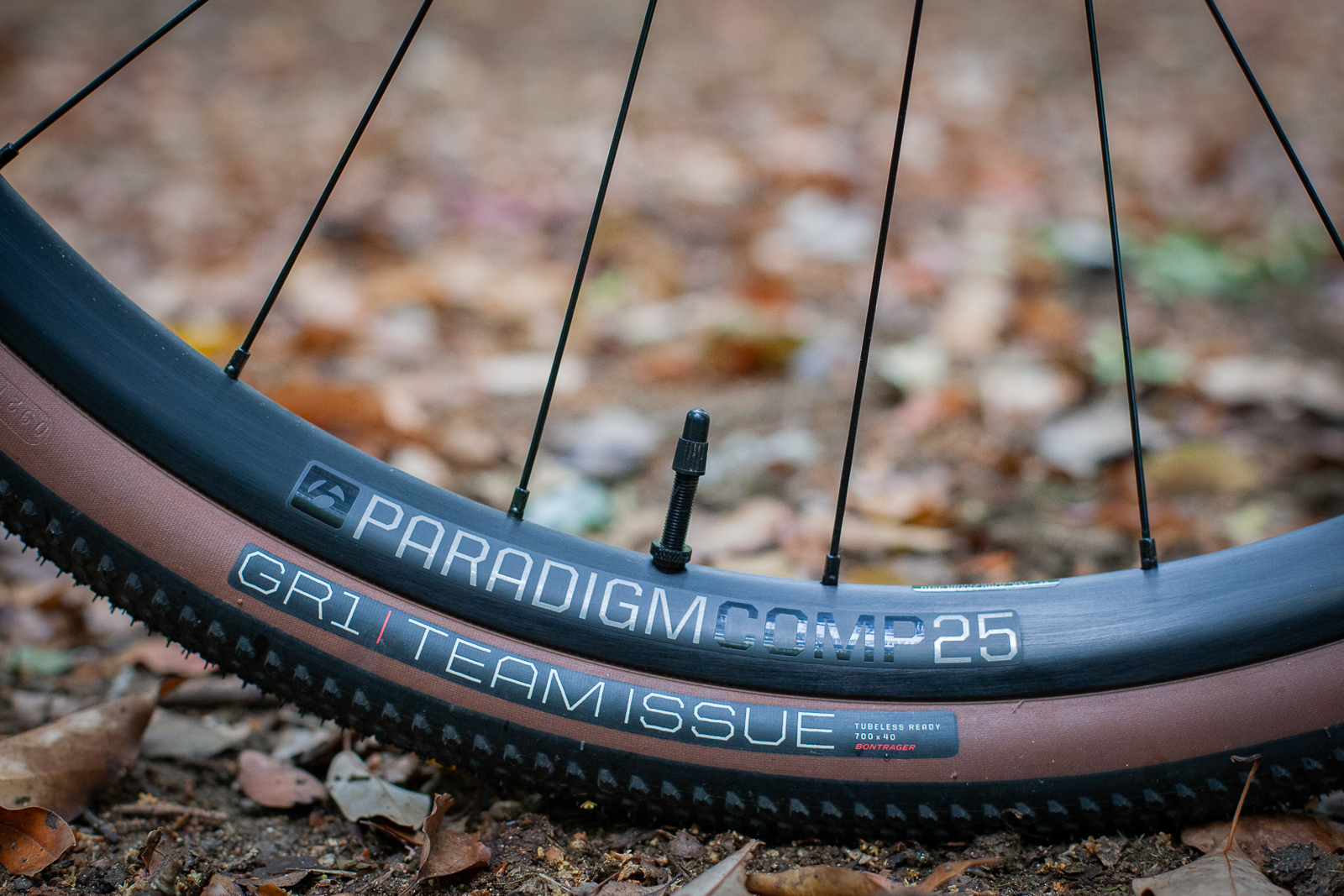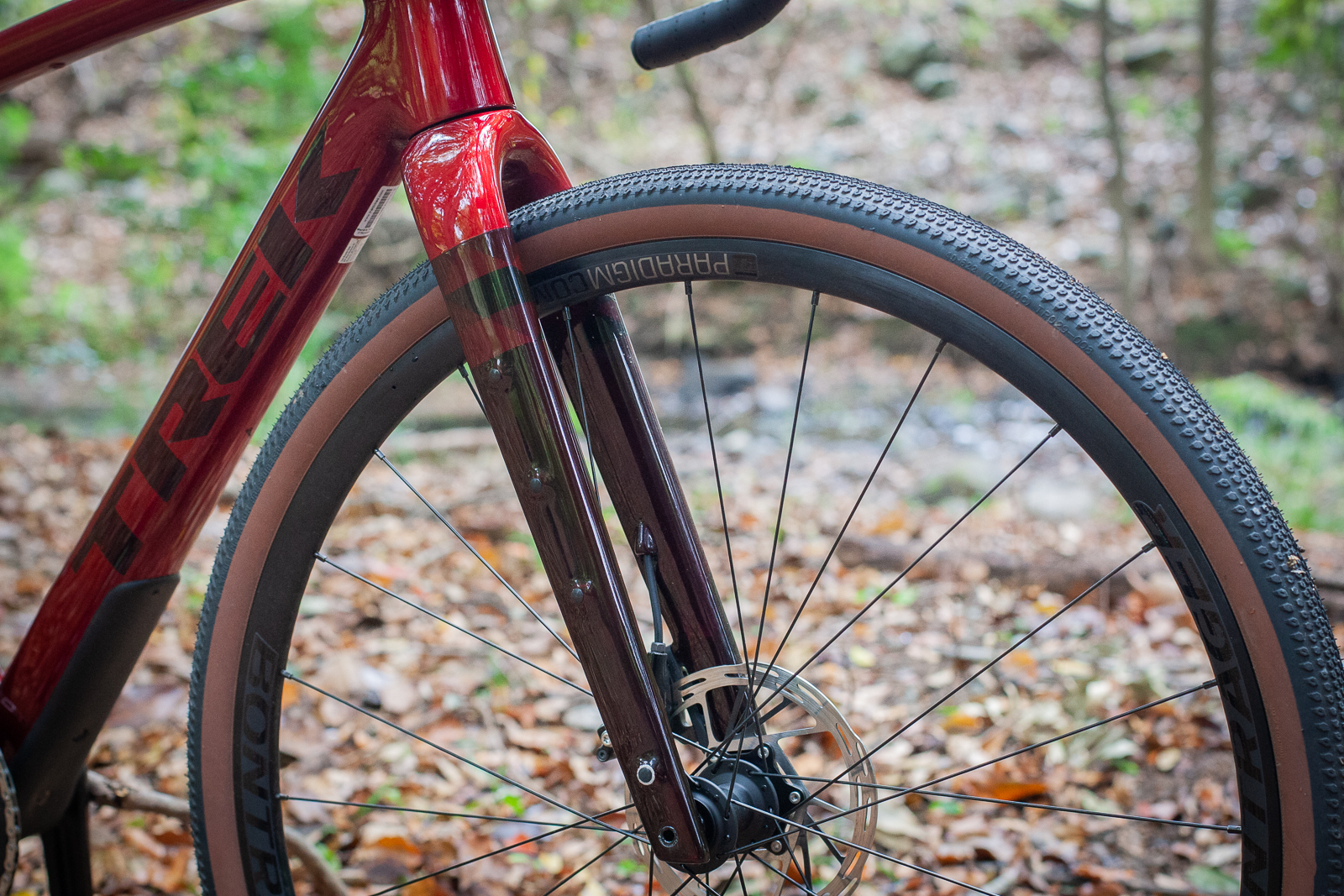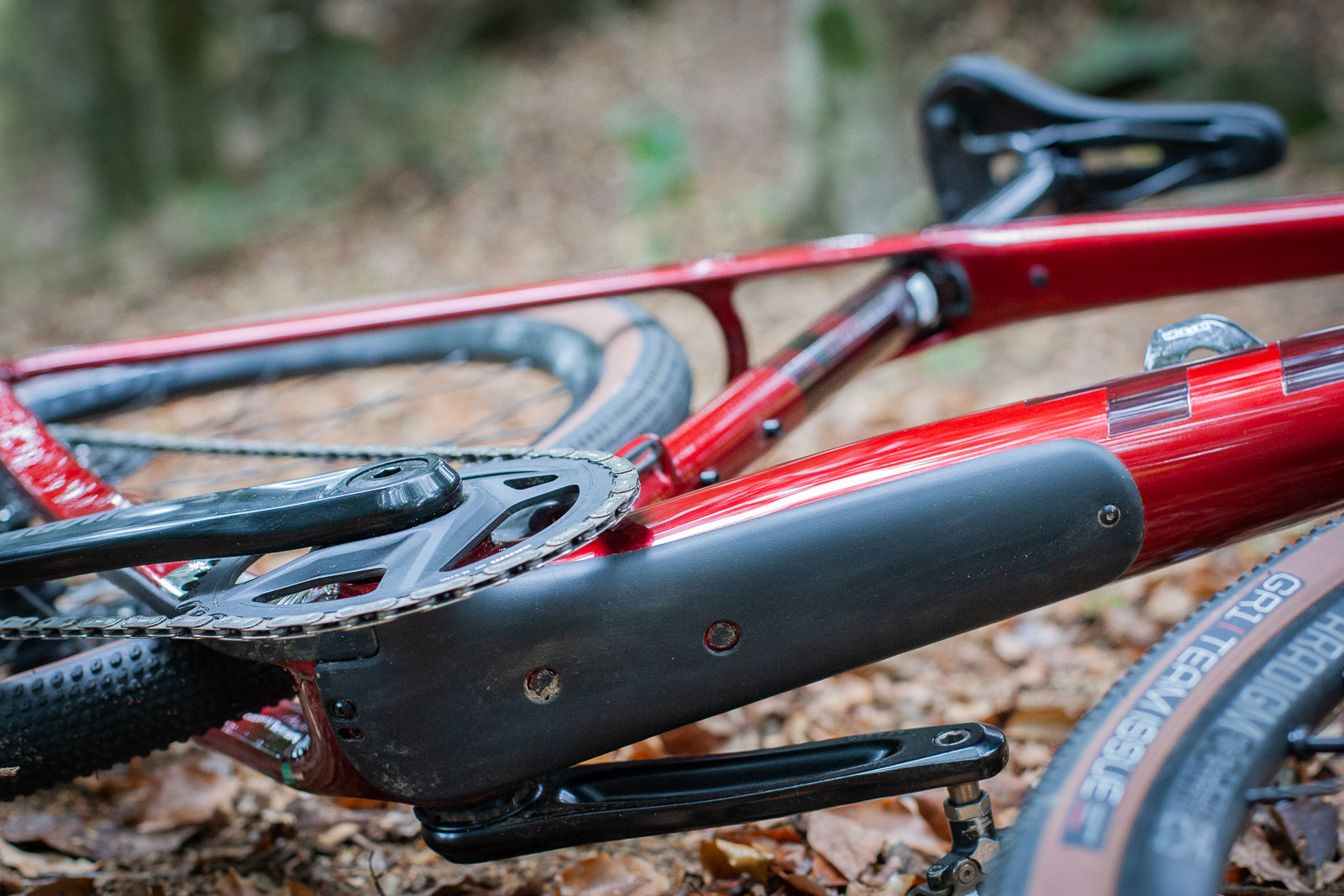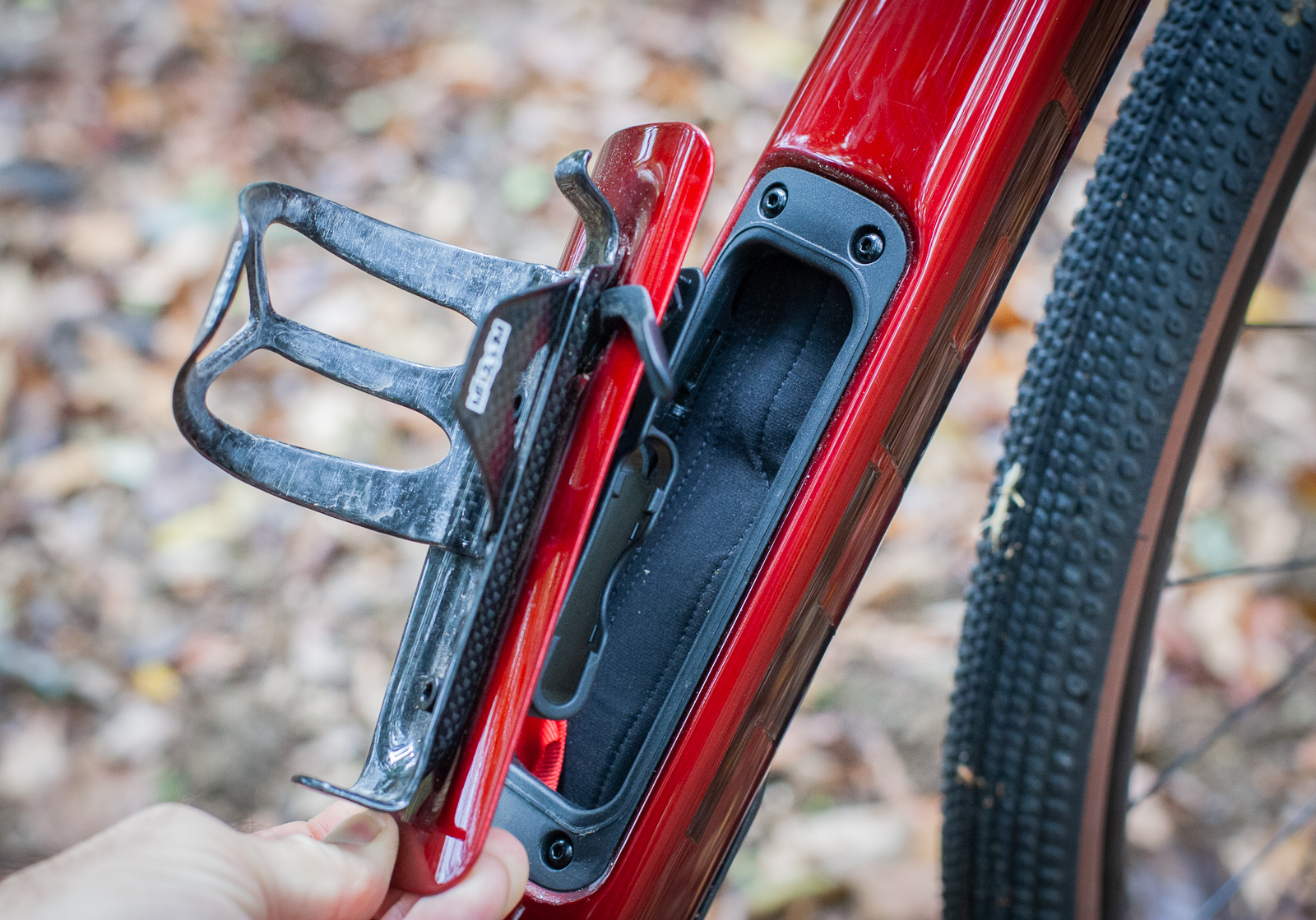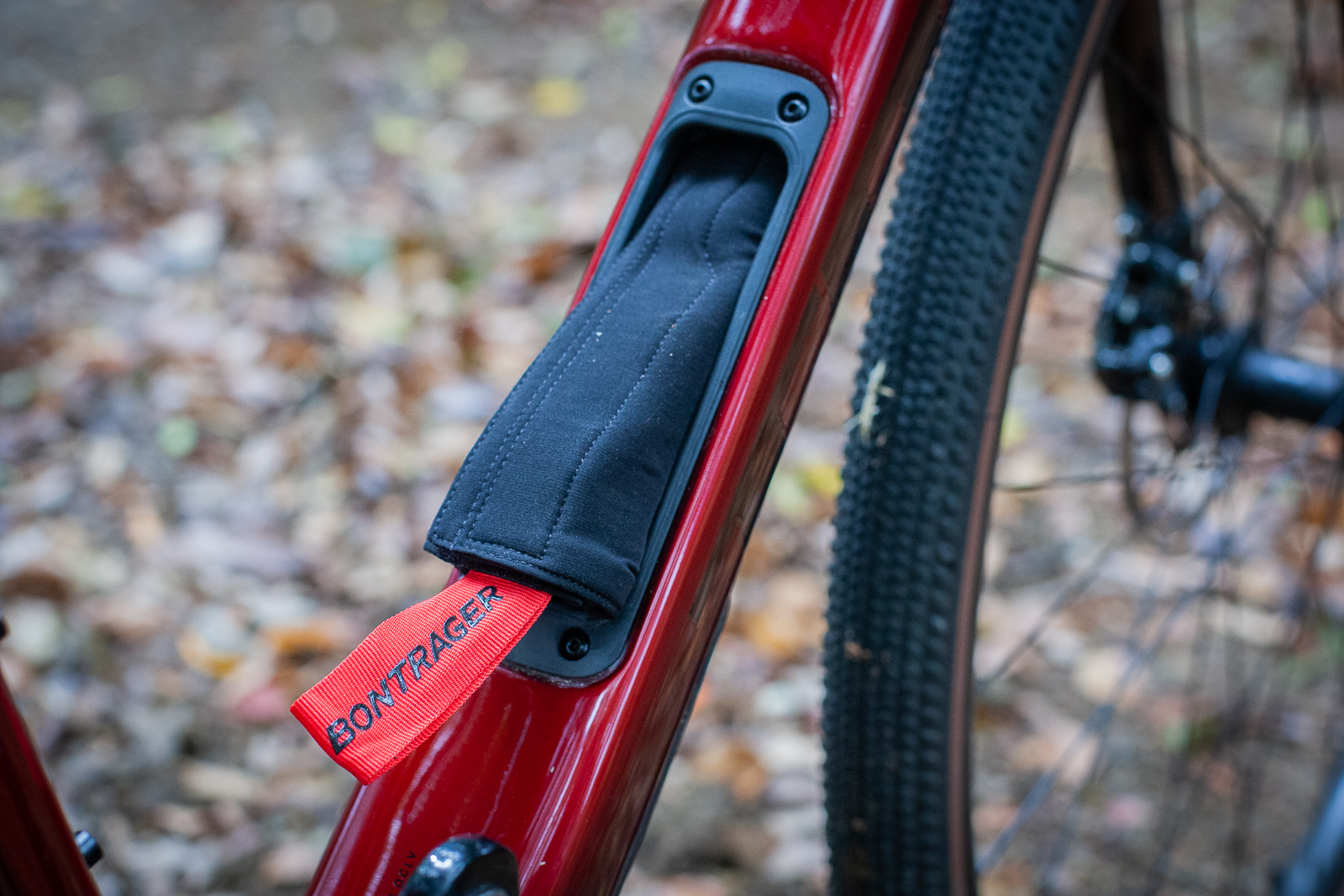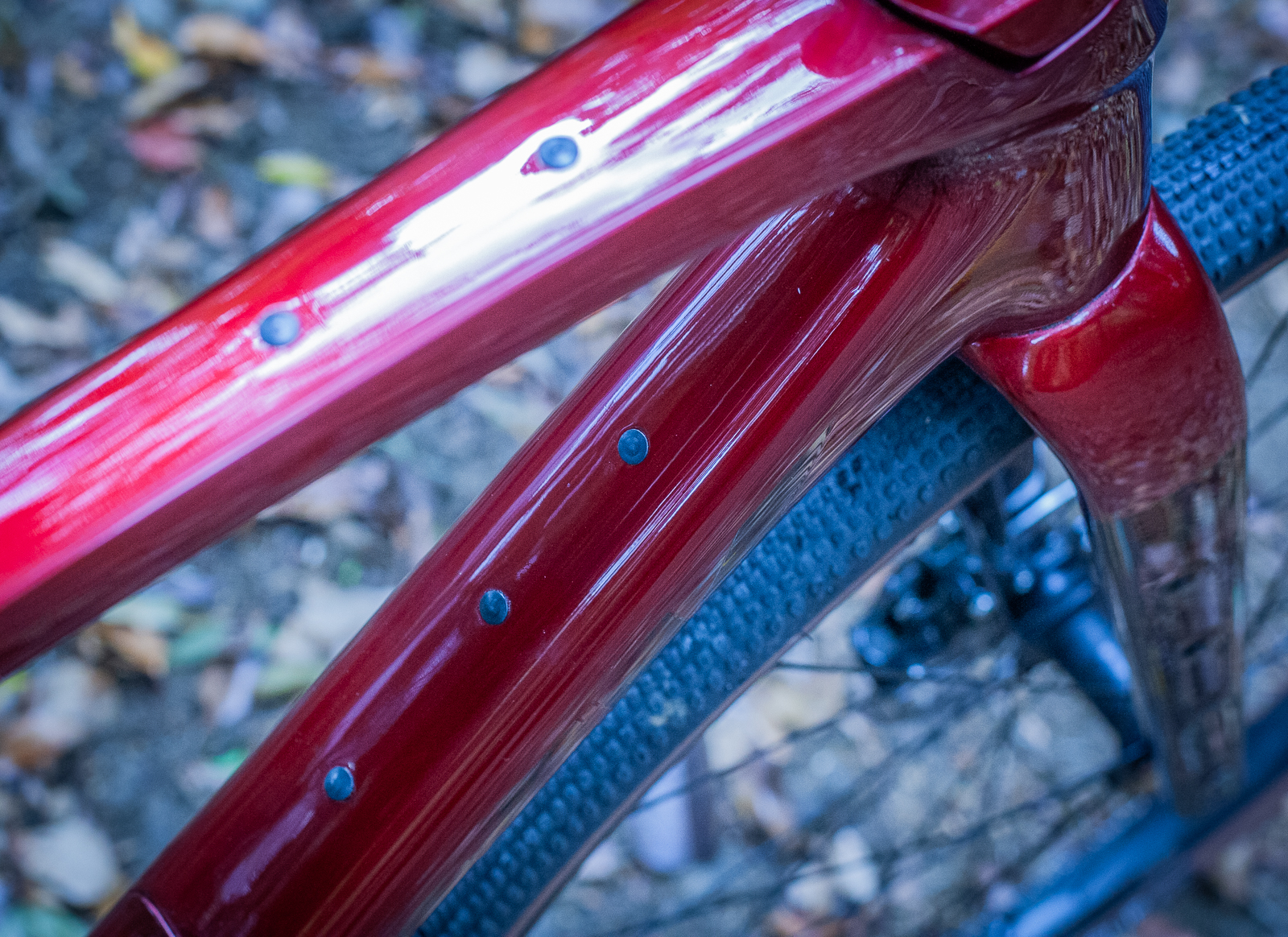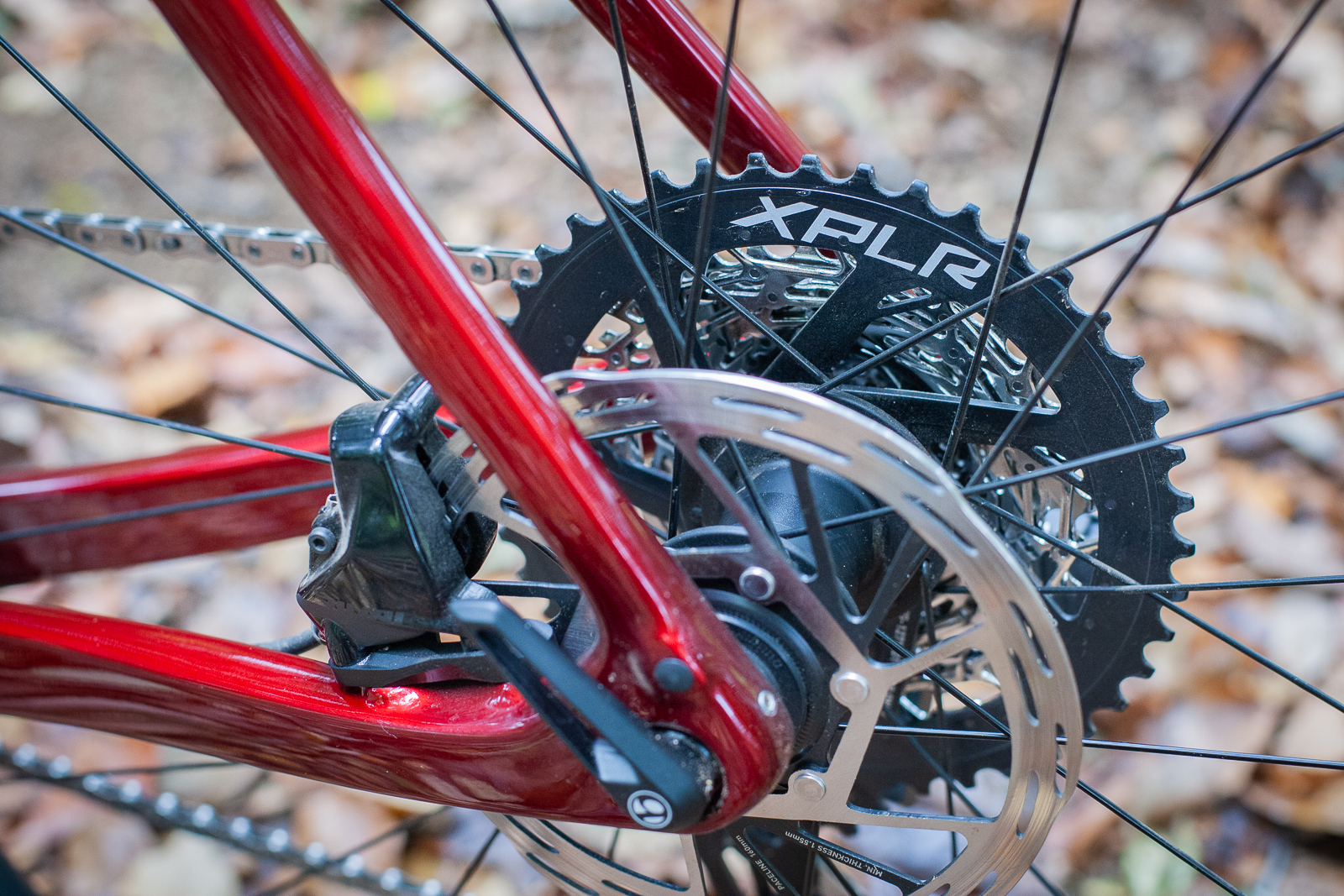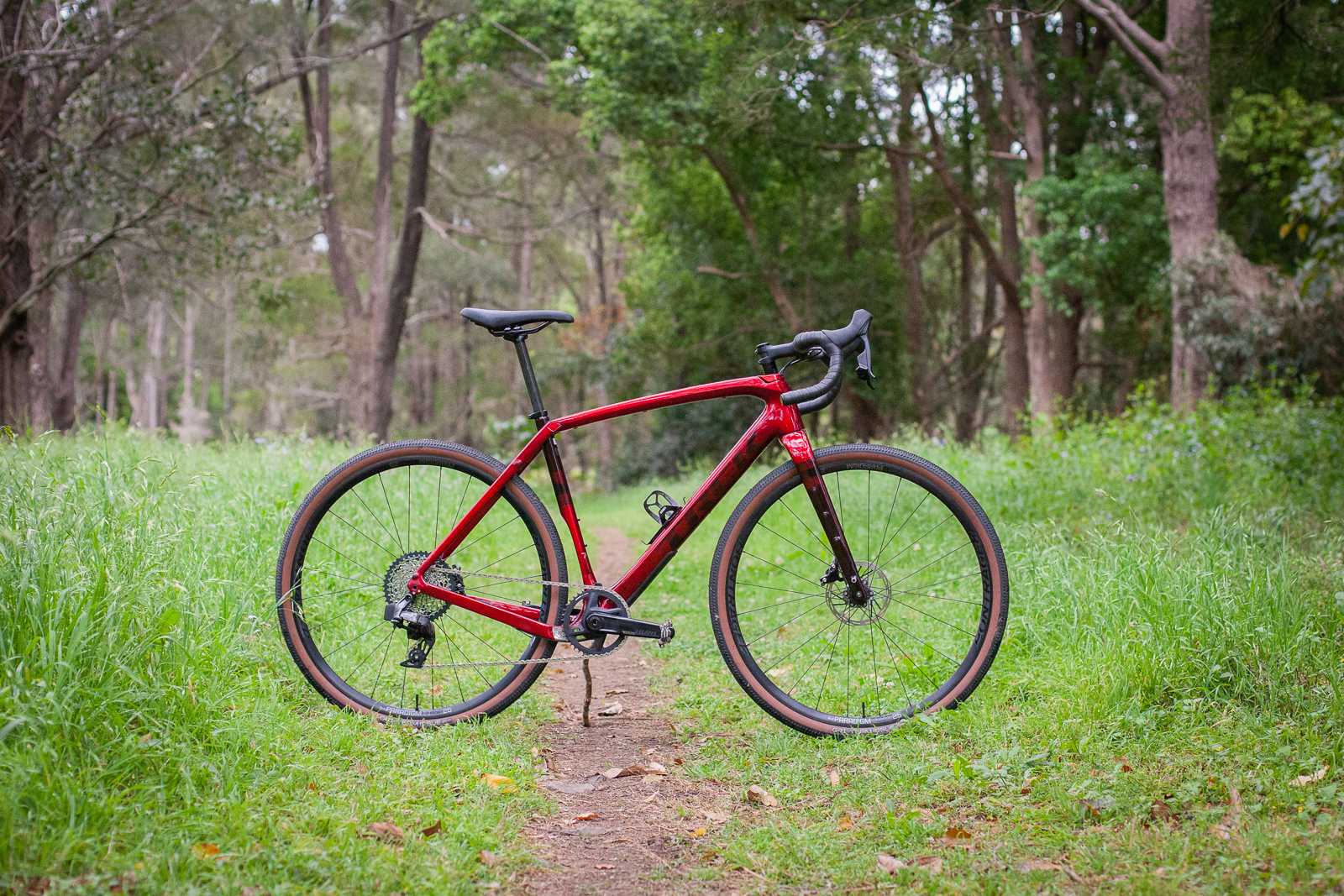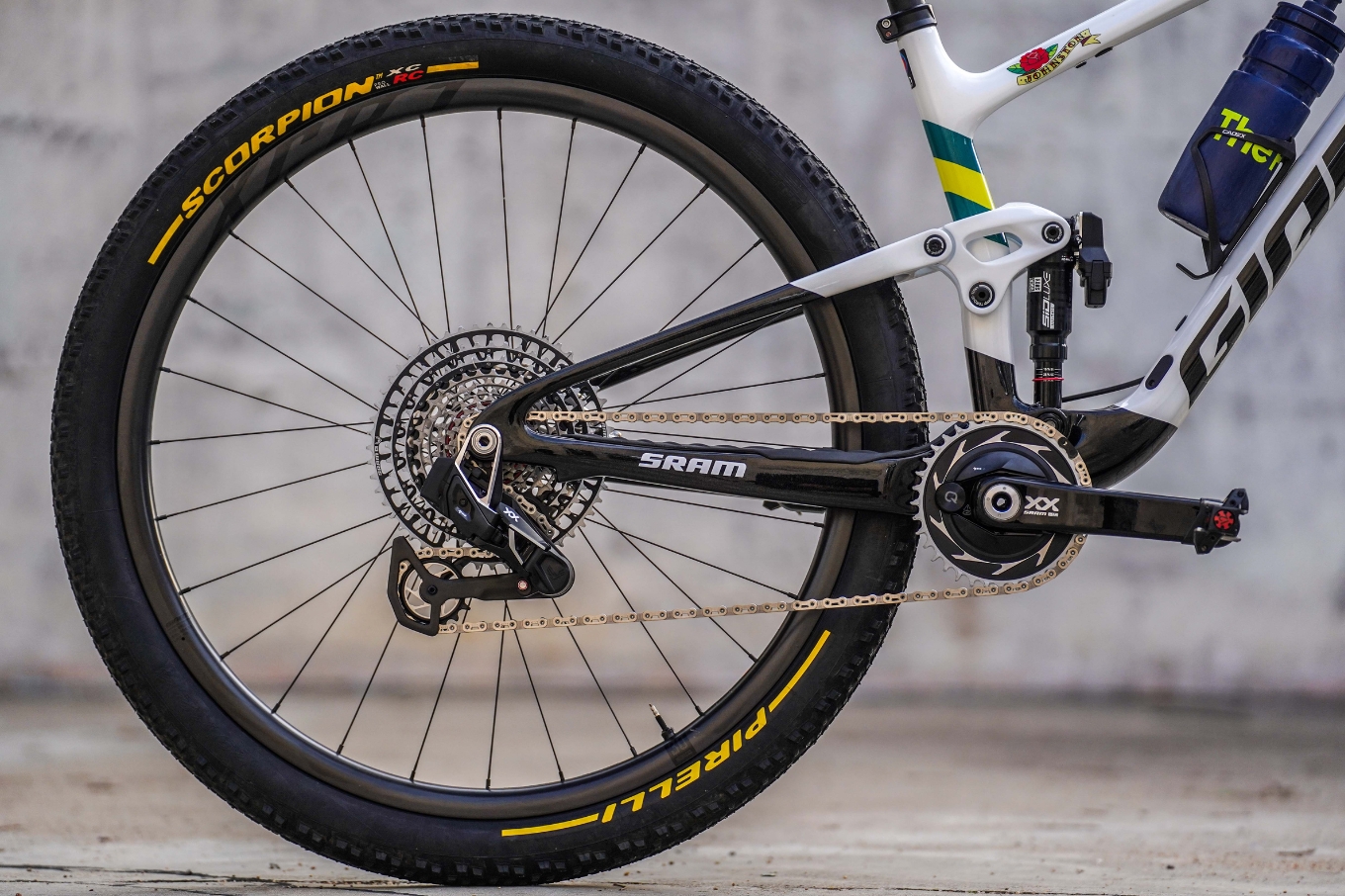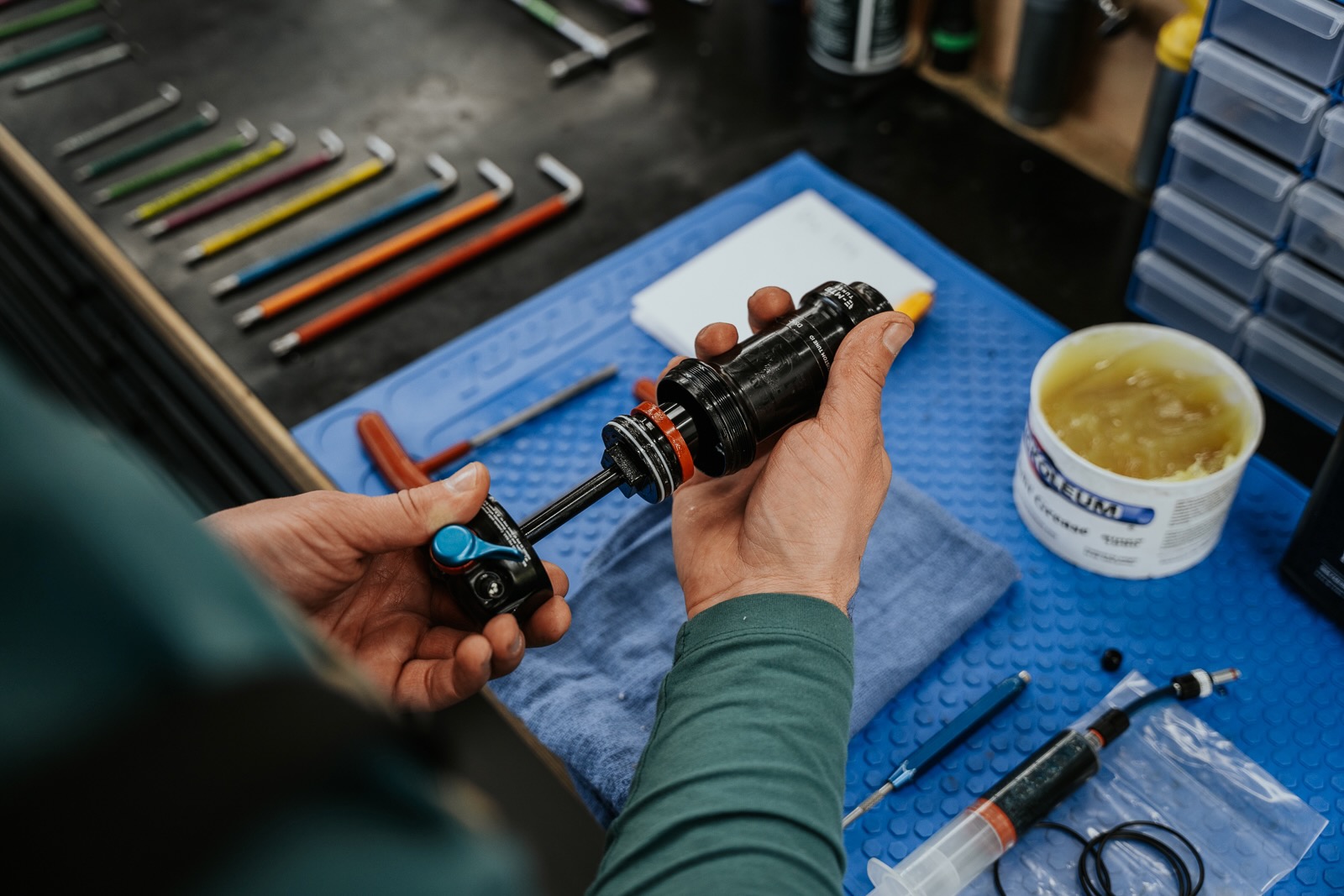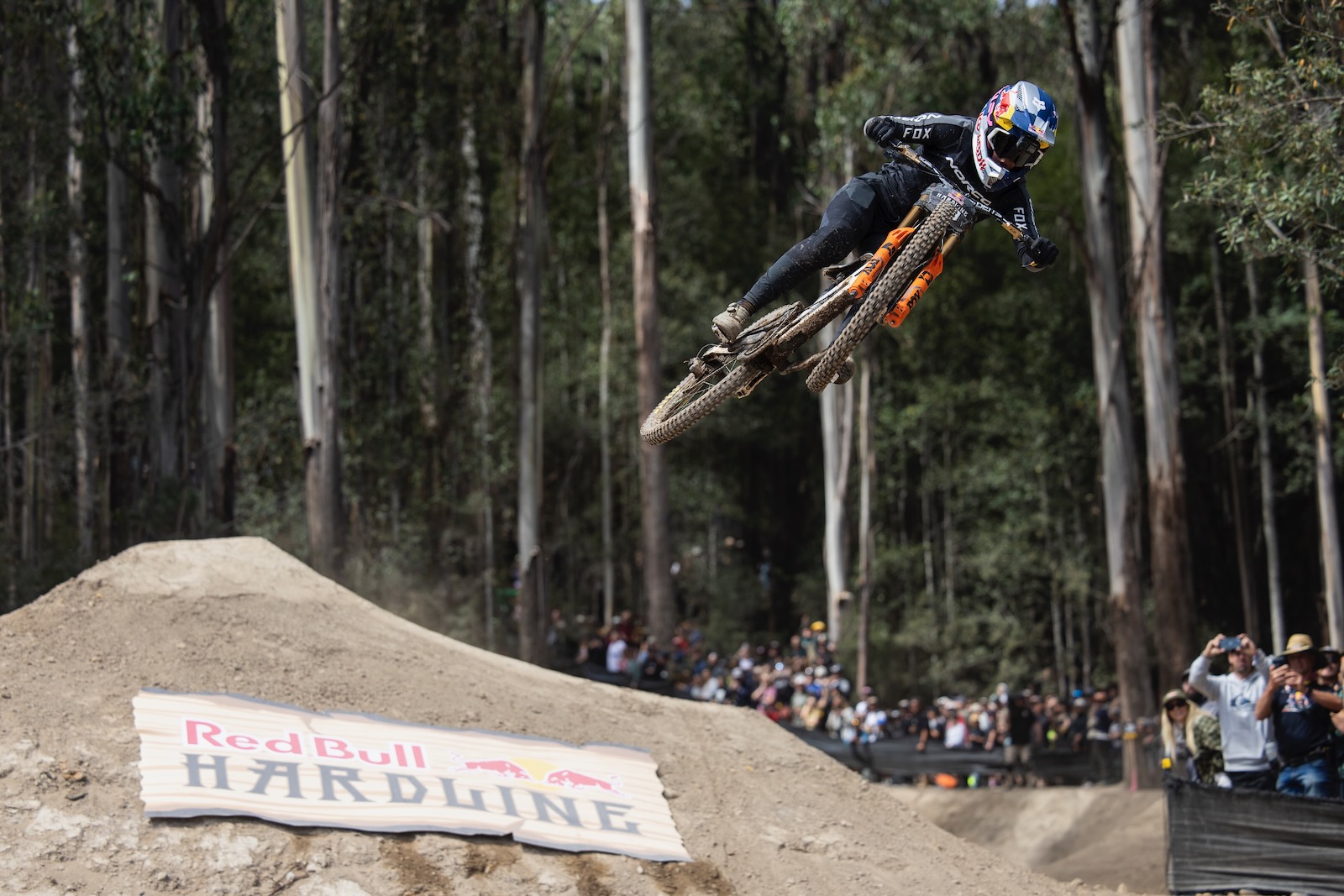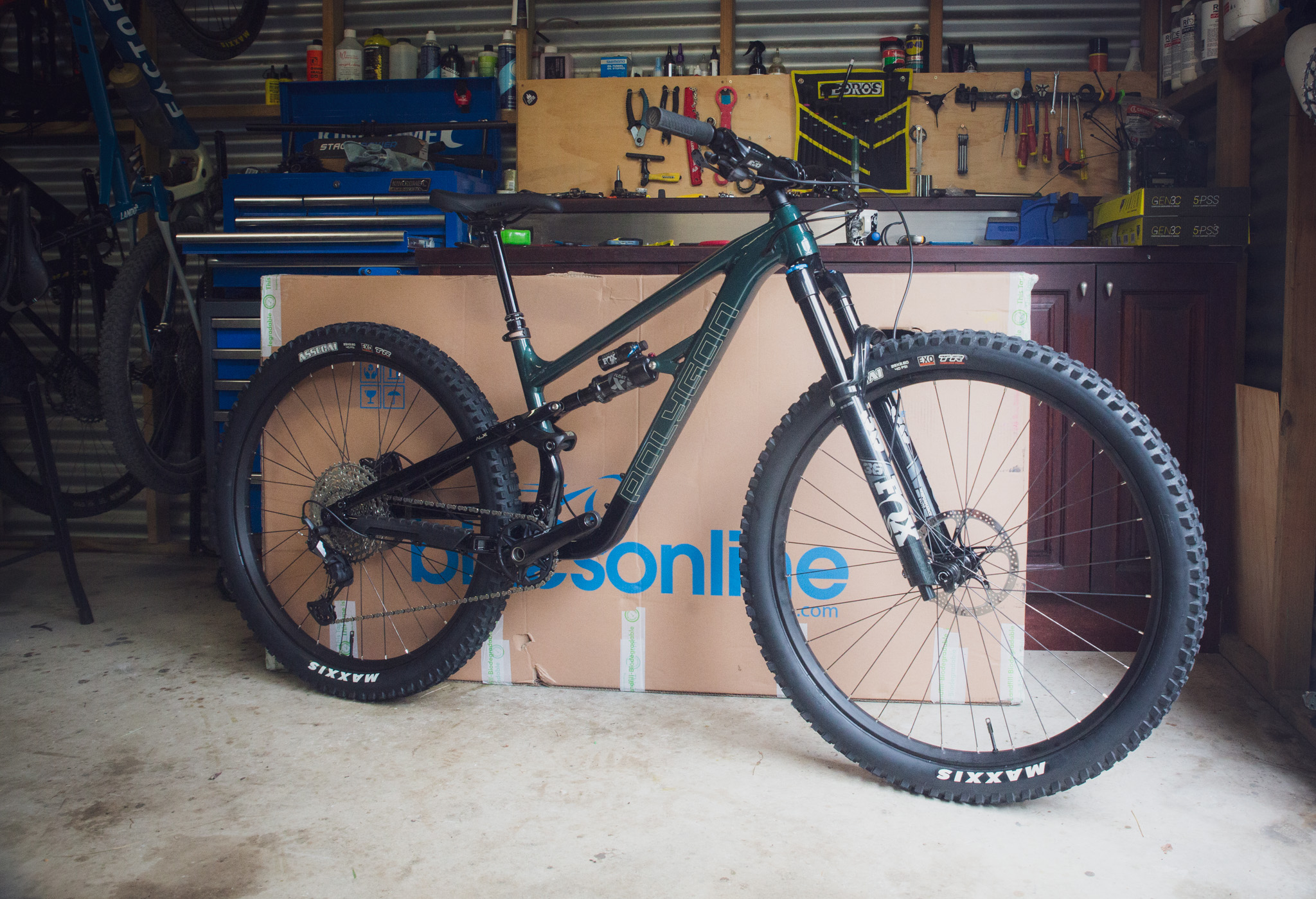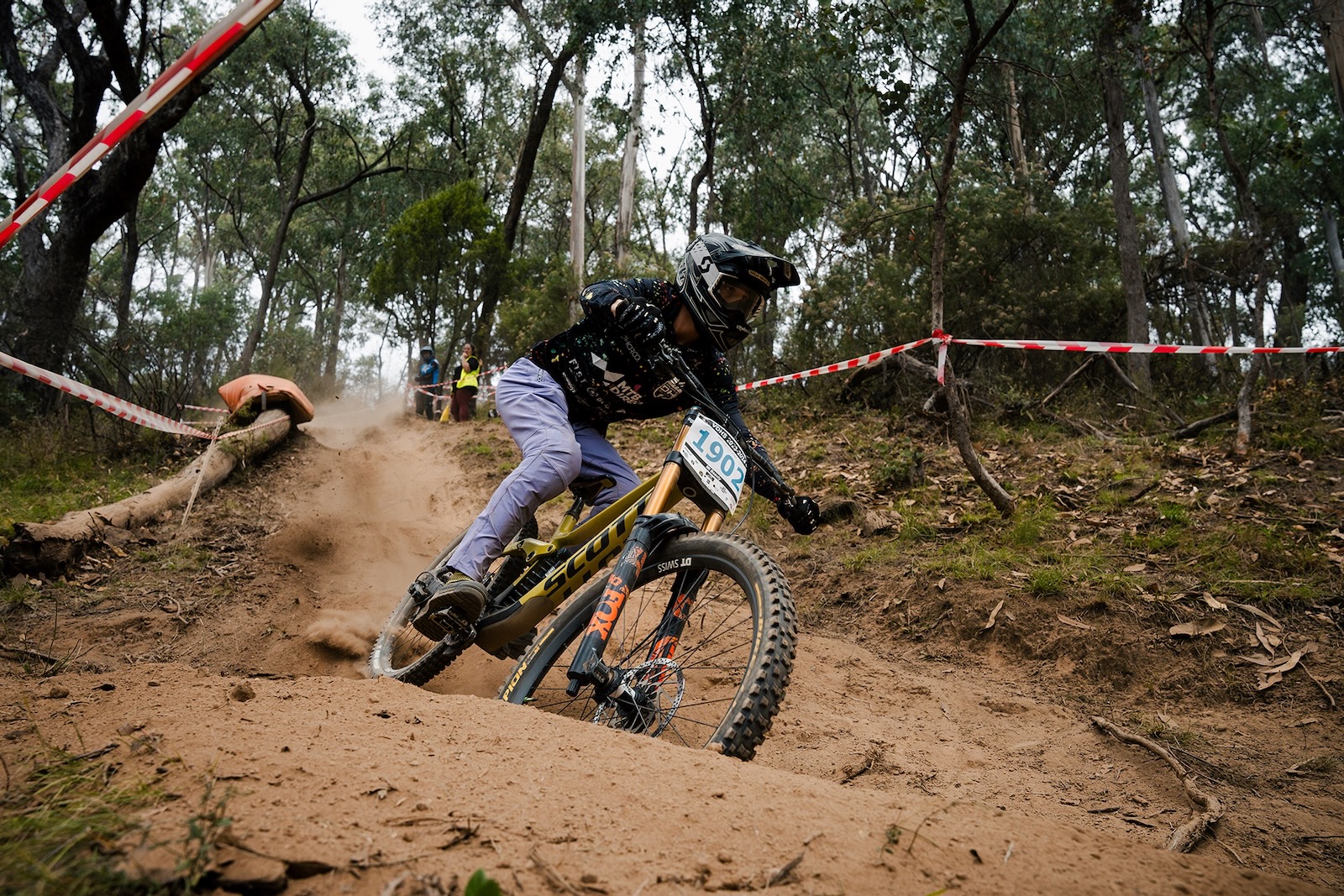First rides on the 2022 Trek Checkpoint SL6
The new Trek Checkpoint SL6 brings a tonne more capability and functionality to Trek's gravel bike range.
Trek have leading bikes in all corners of the cycling world, and the latest Trek Checkpoint has shown that they have listened to the needs of gravel riders and racers to make their drop-bar gravel bike capable of high performance riding and extreme utility.
In short, the design team wanted to embrace all the ways that riders were using the Checkpoint. Whether that was for gravel racing, big rides on back roads, buff singletrack shred sessions, touring, adventure rides or commuting. Trek made sure there is a Checkpoint model to suit. With the top carbon SLR frame, the carbon SL and the alloy ALR models, Trek went to work to make sure any rider on a check point got similar utility from whatever model they bought. So they focused their changes on a few key areas.
Wait a minute – read our full test on the Trek Checkpoint!
Geometry
We all know that geometry makes a big difference to how a bike rides. Go jump on a short and upright bike from 5-10 years ago if you don't agree. Trek actually did the same thing that mountain bike designers have been doing, and made the reach longer, about 2cm longer for the front centre. The 435mm chainstays can accept 700c wheels with 45mm tyres and still have 6mm clearance, or you can sling 650b wheels with 2.1" tyres in there as well. All the Trek Checkpoints come stock with 700c and 40mm tyres.
The longer wheel base helps for stability on gravel, and being behind the front axle is said to increase your confidence when riding off road. I think we can all agree on those points.
The head angle on our 56cm test model is 72.2 degrees, and the seat angle is 72.8 degrees.
Three frames, lots of features
SLR for gravel racing and high performance. It uses OCLV 700 series material and a redesigned top tube Isostrut for less weight. It uses a Trek seat mast and has less mounts than the other frames.
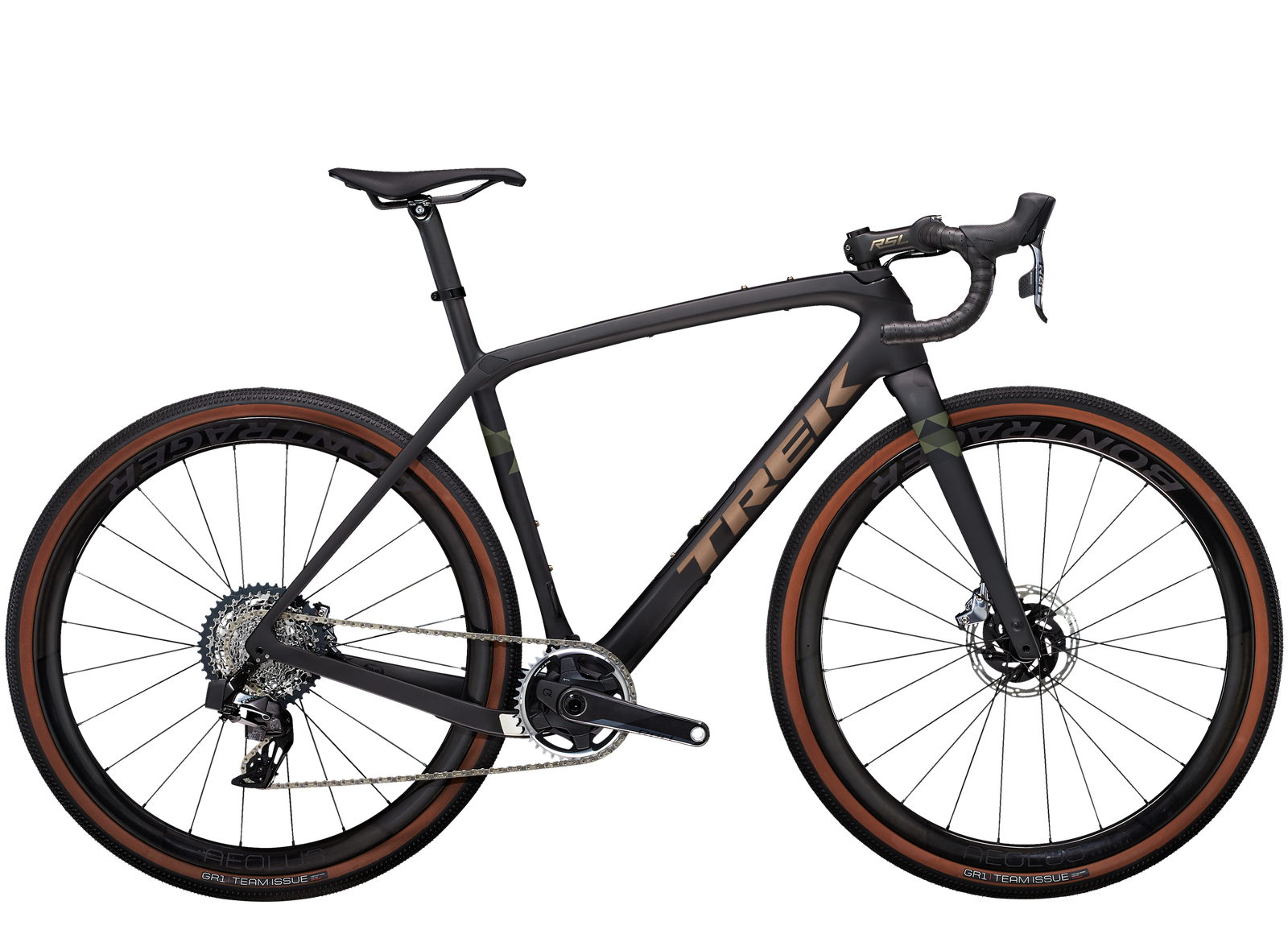
The SL uses 500 series OCLV and has mounts for fenders, racks, bags and all that. It is also compatible with 27.2mm dropper posts. The SLR frame is about 300g ligher than the SL, so if weight is a concern – get the SLR.
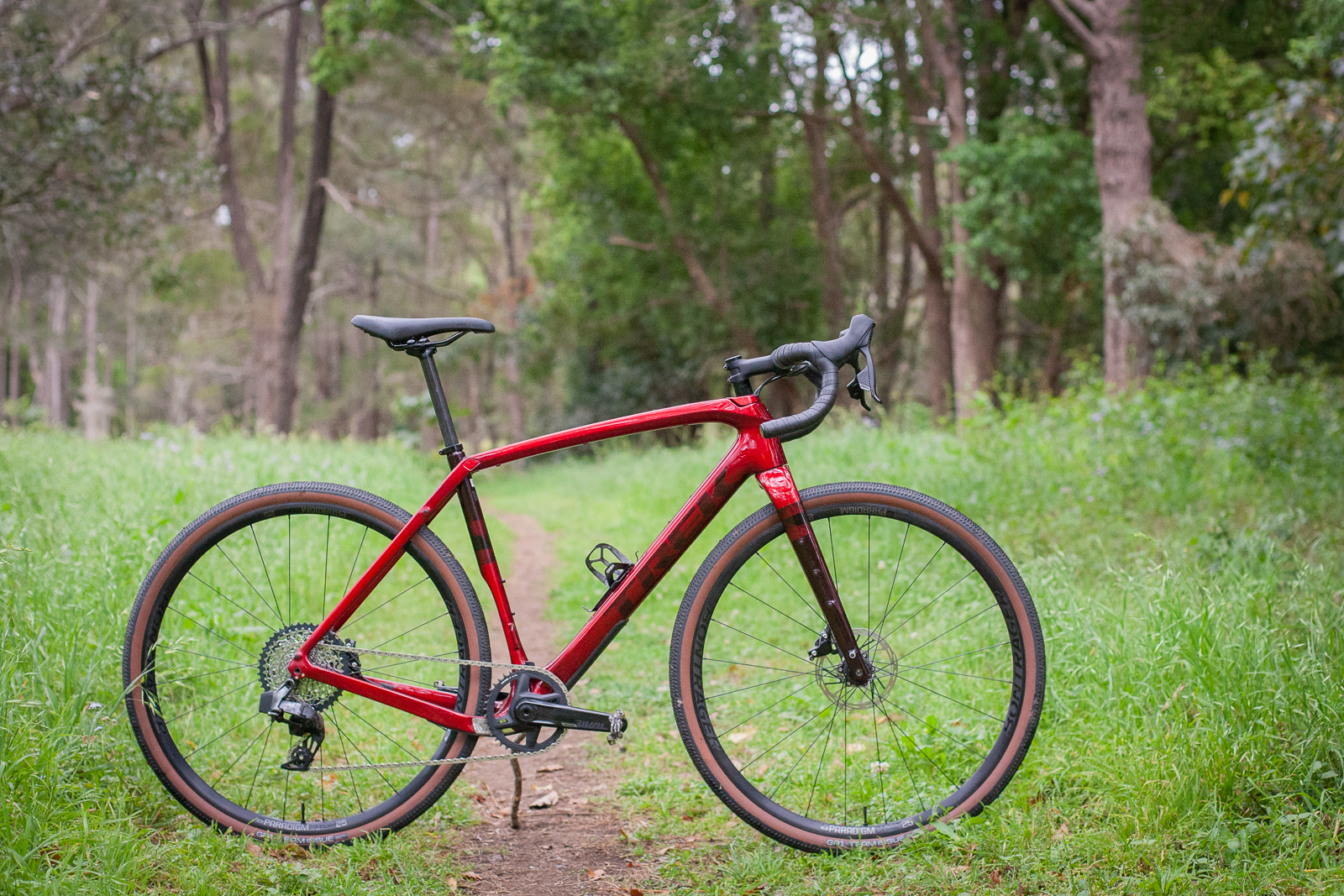
The ALR is the workhorse, and it shares the geometry of the other frames. It can take a 27.2mm dropper post. The alloy frame does away with details like internal routing and frame storage. But you can bolt just about anything on!
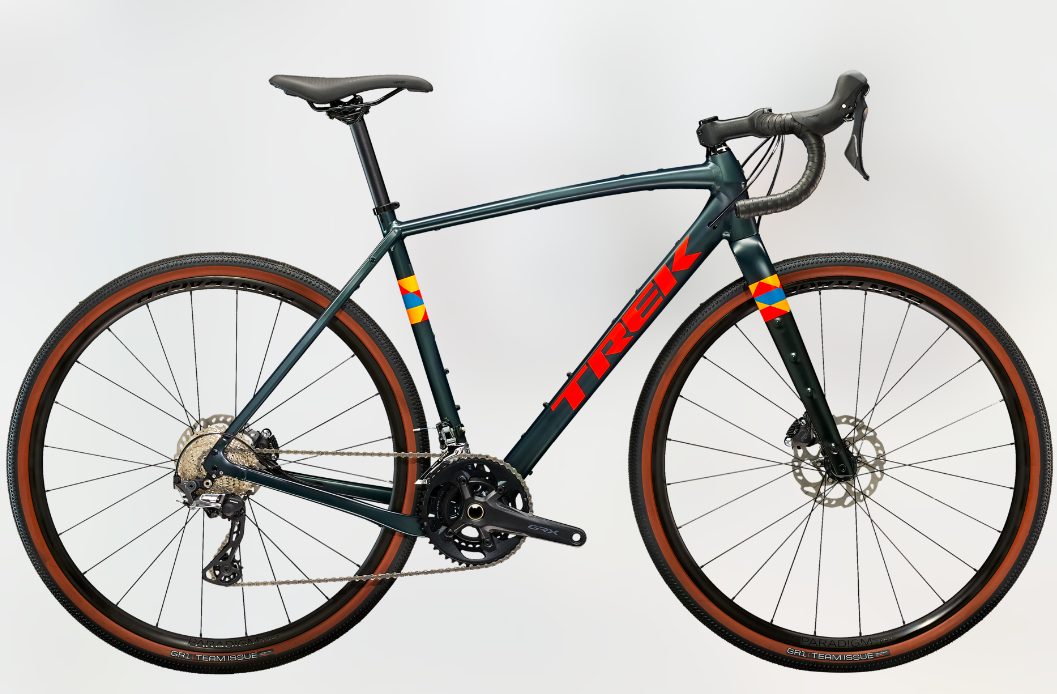
Trek added bolt holes everywhere to the ALR and SL, not just so you can carry lots of water bottles, but also for their own direct fit bags. They have a range of bags for the seat post and bars, but the ones for on top of the top tube and below it bolt directly to the frame. It looks neater, and offers a tonne of stability. The SL and ALR frames have the most mounts, with the lighter carbon on the SLR being aimed at racers – who probably won't be fitting racks. The SLR can take fenders and the frame bags via direct mounting.
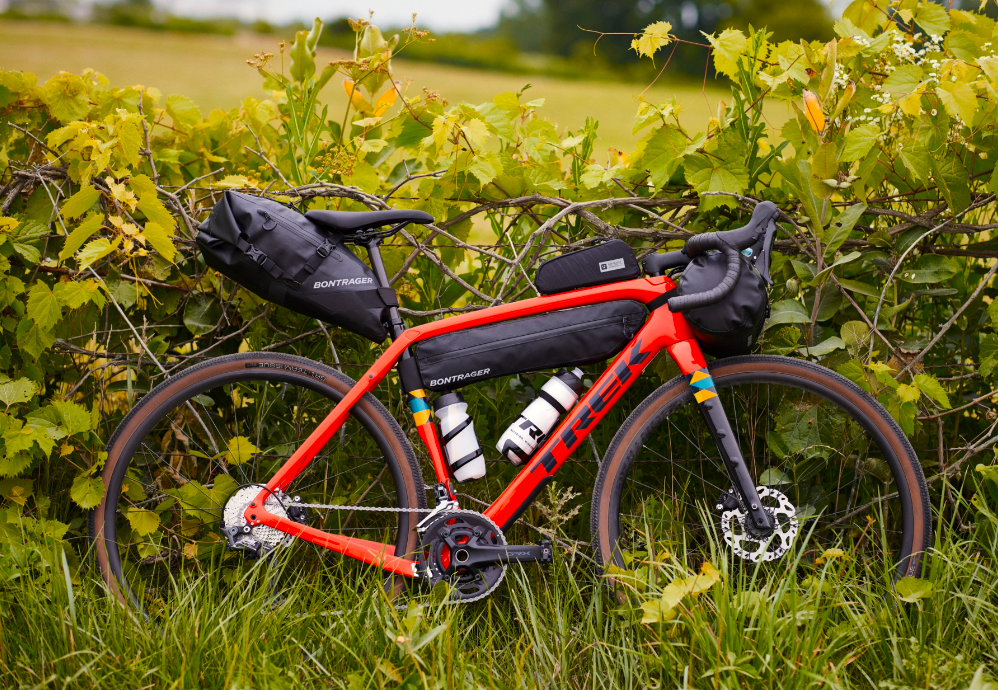
Trek also worked their internal storage into the SLR and SL frames. It looks the same as what you get on the Fuel EX. There's a neoprene roll in there to swallow up your spares, so you can free up some pocket space.
All frames have threaded bottom brackets, using the T47 standard. It's wide, it's stiff and there's excellent serviceability over time. Trek are using Praxis and SRAM DUB bottom brackets across the range.
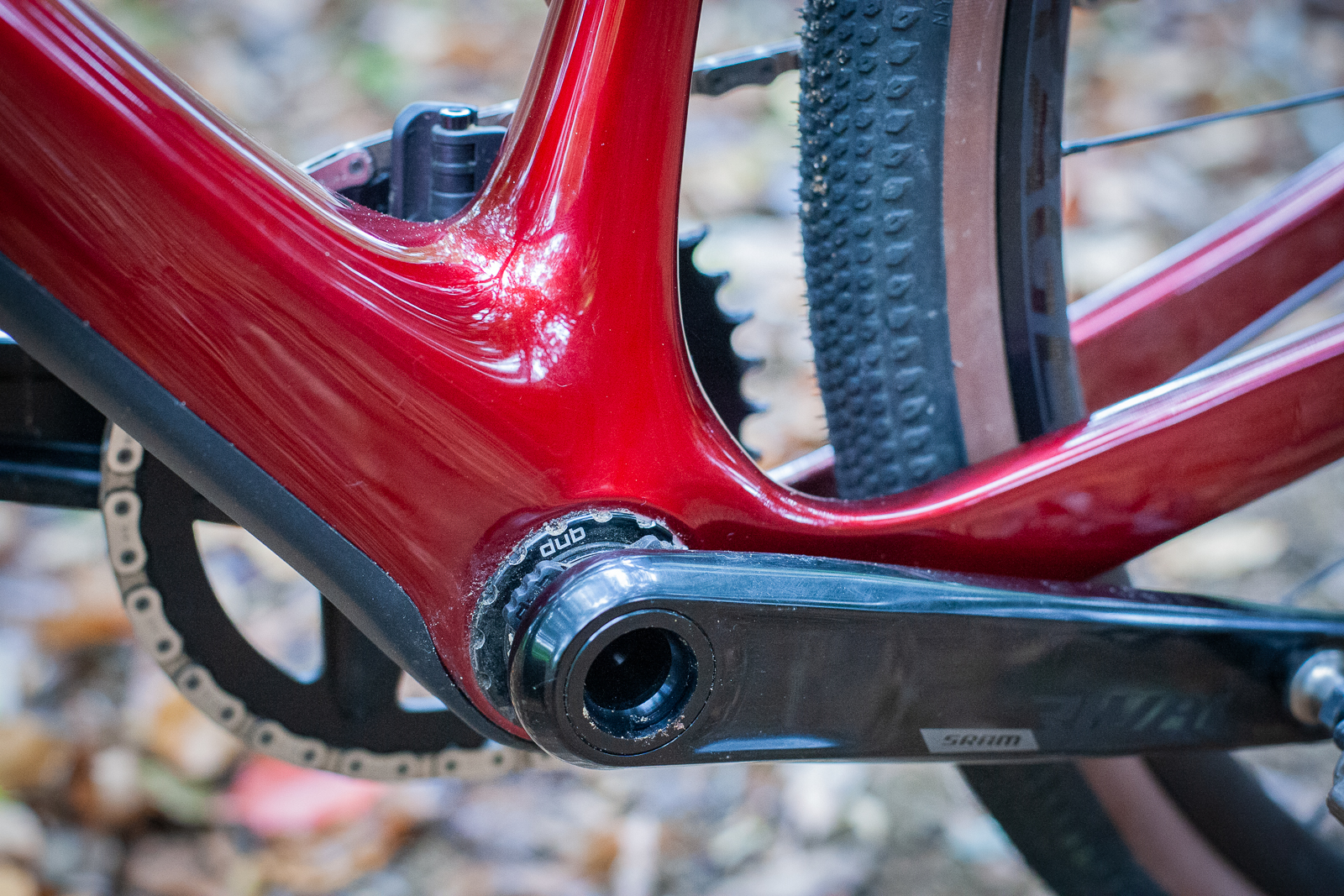
The SL and SLR also have hidden cable routing, it enters via a sunken top tube cap. If you're servicing your bike thoroughly this can be fussy, but this is really common on road bikes for a clean look. And it keeps the hoses and cables out of the way of a bar bag roll. And on our SL6 model, it's just hoses anyway with the SRAM AXS Rival group set.
All the frames have through axles, and there's frame protection as you'd expect for a bike designed to spend most of its life off road. You can remove it if you want to go full weight weenie.
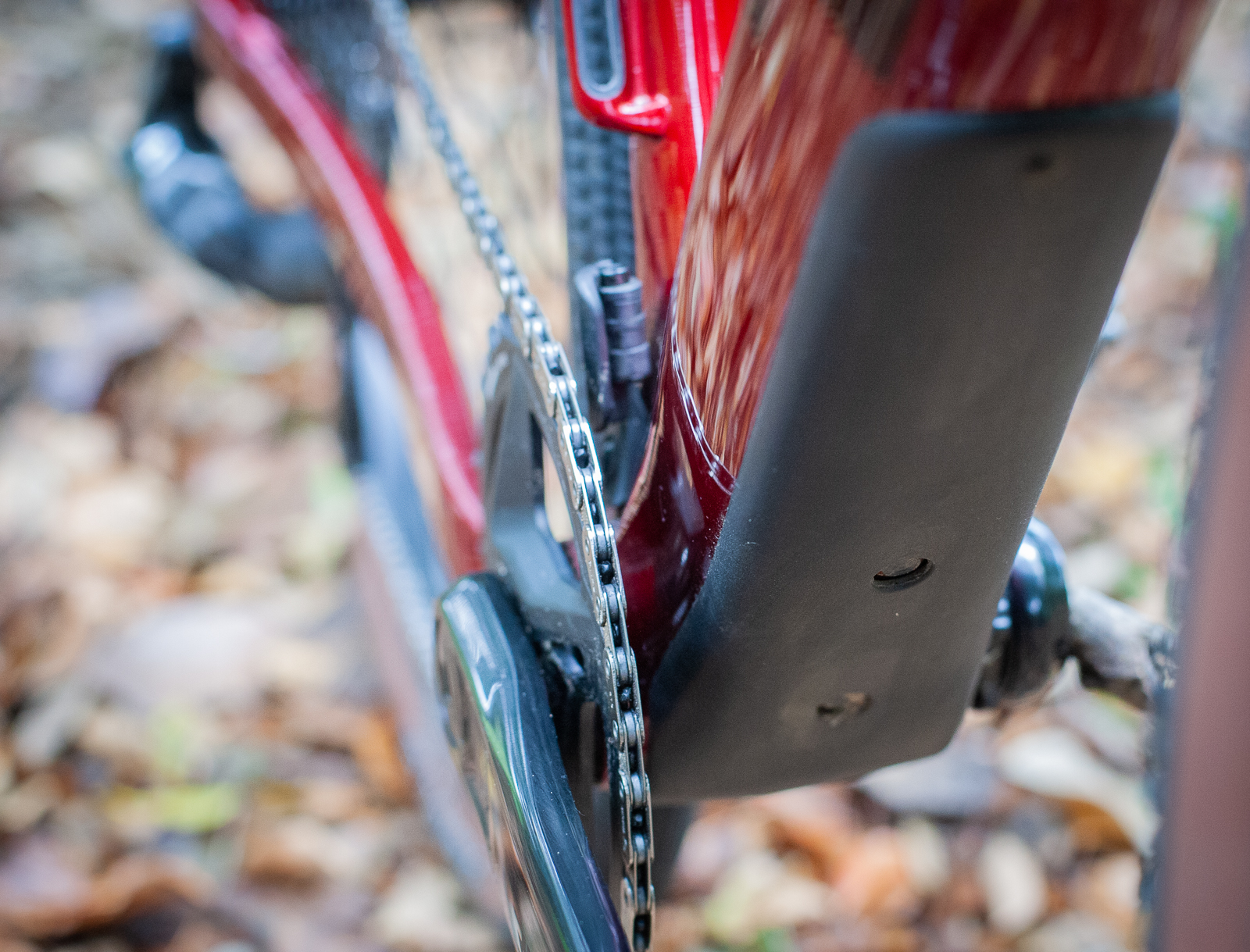
Trek Checkpoint models, pricing and weights
Checkpoint SLR 9 eTap – $16499.99 – 8.1kg
Checkpoint SLR 7 eTap – $11699.99 – 8.45kg
Checkpoint SLR 7 – $11399.99 – 8.81kg
Checkpoint SLR 6 eTap – $10199.99 – 8.65kg
Checkpoint SL 7 eTap – $7999.99 – 8.9kg
Checkpoint SL 6 eTap – $5299.99 – 9.05kg
Checkpoint SL 5 – $4199.99 – 9.65kg
Checkpoint ALR 5 – $3199.99 – 9.75kg
You can find all the details on the Trek website.
So how does the Trek Checkpoint SL6 ride?
I have ridden a number of gravel bikes and cyclocross bikes over the past decade or so. To me, both are another way to have fun riding off-road – although in a very different way to a mountain bike. But the current crop of gravel bikes are getting really capable. They're not about to eclipse the usefulness of a hardtail when actually going mountain biking, but they might prove more versatile for less demanding off-road pursuits.
The Trek Checkpoint SL6 stands out from the crowd thanks to the beefy frame, mostly around the downtube. This isn't a new thing for Trek's drop bar bikes, but this thing has girth! The frame storage makes a lot of sense for a bike that you might spend all day on, and the system has been quiet and well-sealed as well.
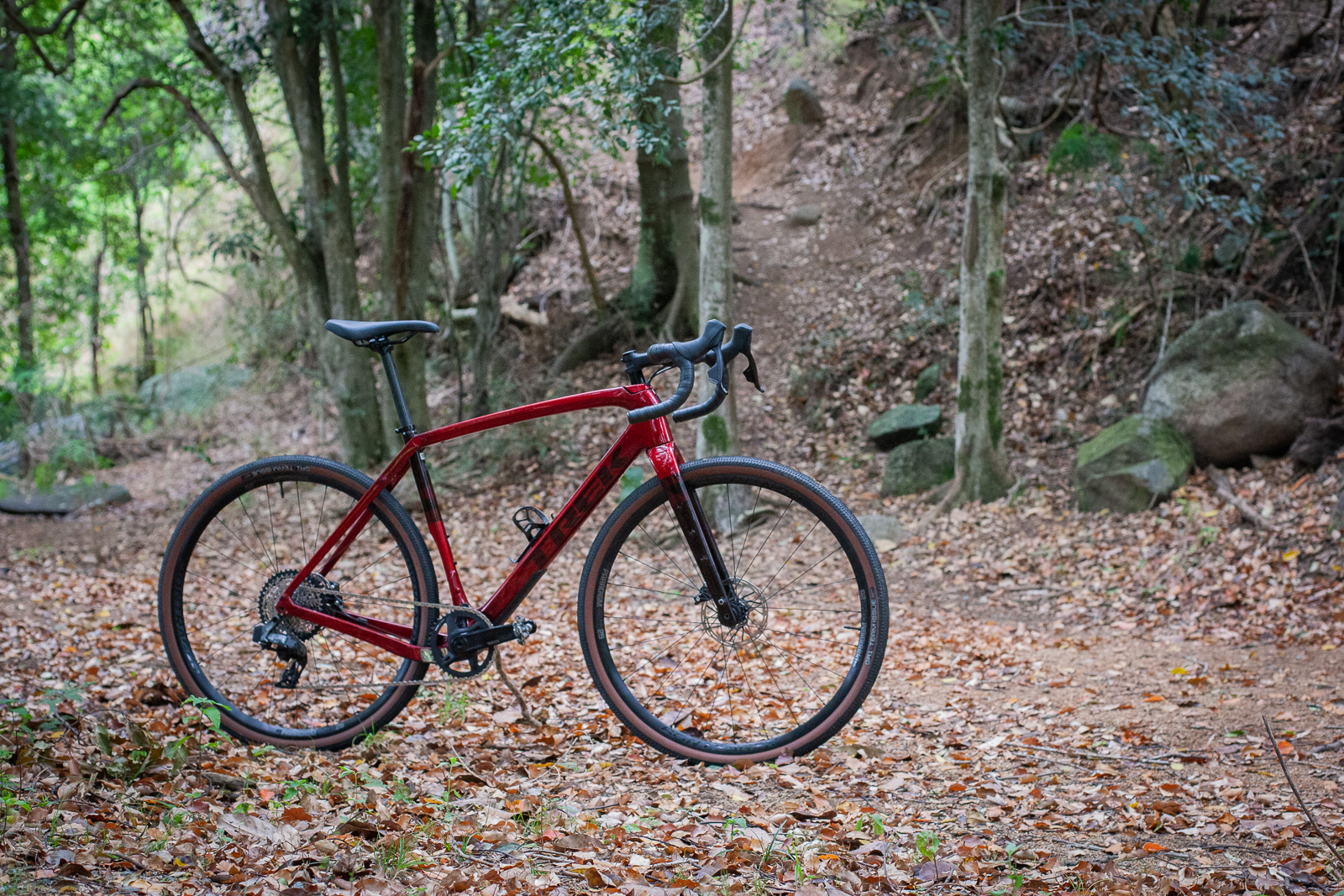
At a glance the bike looks big, and the 56cm is long. However, Trek have mitigated the extra reach in the frame with a shorter stem and bars with less reach. This means moving from the hoods, to the drops and to the tops of the bars changes your hand position and comfort – but it's not a huge ask of your lower back when bending down. Infact, the whole position is pretty upright. The head tube isn't crazy tall, but the bottom bracket is nice and low for stability.
Pair that low bottom bracket with the extra length, and you'd be amazed how well the Checkpoint sticks to the ground, even on off-camber corners. And while it's certainly no cyclocross bike, a quick remount is a lot easier given the low BB means your seat isn't way up in the air either.
The Trek Checkpoint SL6 is my first ride aboard any kind of AXS eTap, and I'm impressed. Using the left shifter for downshifts and the right for upshifts took about 2 shifts to get used to on the wide range 1x group set. Sure, the Rival AXS group set isn't light, my test bike is over 9.5kg. That's not heavy but it's a kilo more than my regular cyclocross/gravel rig
The Checkpoint runs a 40t chain ring and the 10-44 12-speed cassette in the rear. So far it's been a good range for climbing multi-use trails up to about 20%. I spin out on the flat but on a gravel bike gearing can be a compromise when you go 1x.
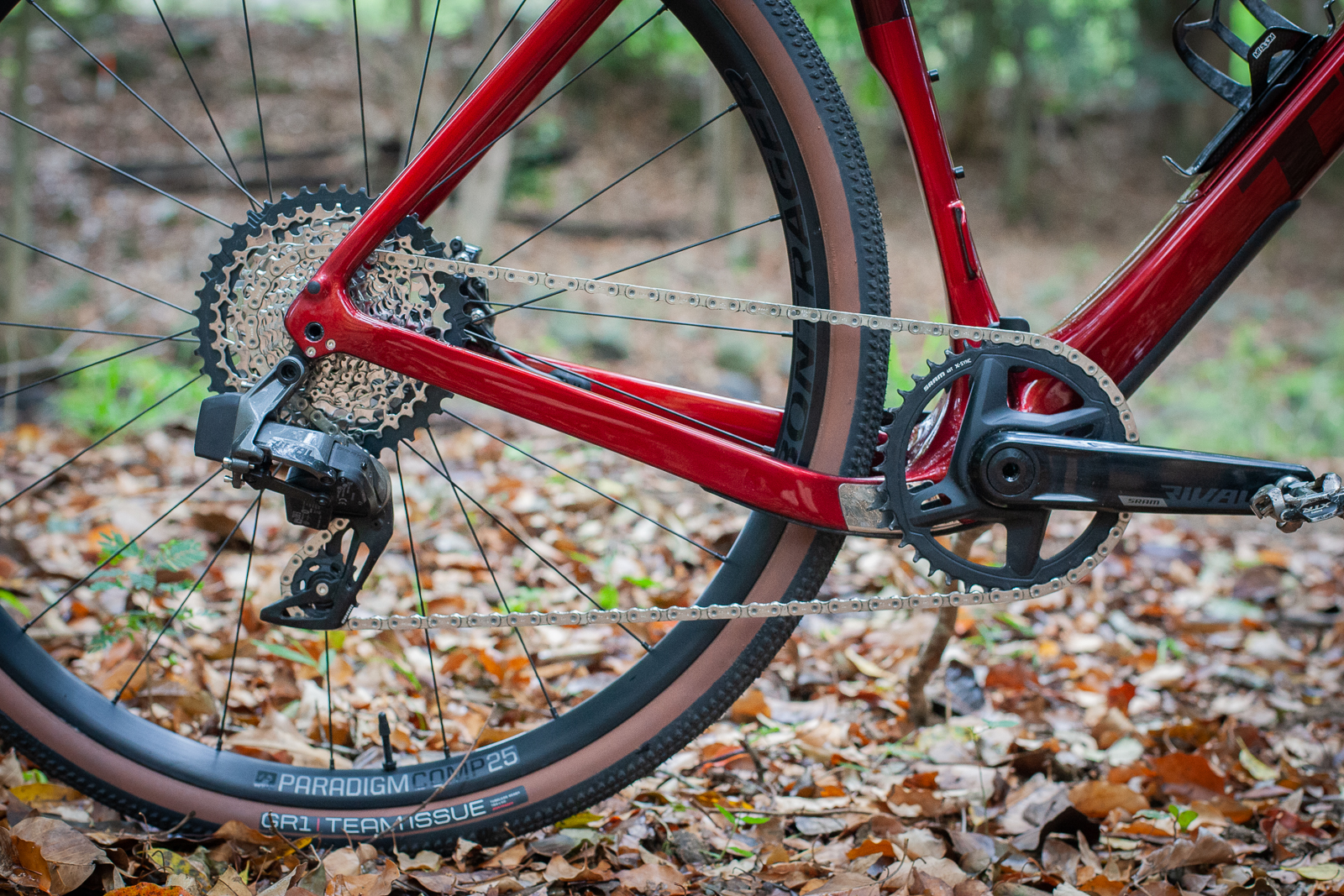
While the IsoStrut is a great extra, it's hard to say whether it makes a huge difference. I sure notice the difference using the low profile Bontrager Paradigm wheels with the 40mm tyres at barely 30psi. It's super comfy!
I've got some more riding to do, and I need to fit up the frame bags and get out there to see how the bike rides when loaded. I'll have a full review in a coming issue. But I think the Checkpoint has listened to what gravel riders and racers want, and it has evolved.
